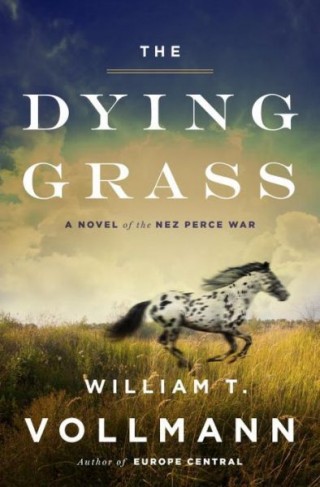April 28, 2015
Should hardcovers cost more? This one’s $55
by Kirsten Reach
 We’ve discussed whether books should cost less than a cup of coffee. Let’s take a minute to consider the opposite. Should books cost more, rather than less, the standard hardcover price?
We’ve discussed whether books should cost less than a cup of coffee. Let’s take a minute to consider the opposite. Should books cost more, rather than less, the standard hardcover price?
William Vollmann‘s The Dying Grass, which will come out at the end of July, is priced at $55. Anecdotally, the Vollmann fans I’ve met are the type to preorder the book in hardcover, to be sure they have a first edition. It’s a pretty safe bet that readers who are interested in collecting his work will shell out $55 for a hardcover.
Imperial, published in 2009, was $55 as well. Should this be a standard for doorstopper volumes? Vollmann’s Last Stories and Other Stories, released last July, was a mere $36. Other fiction titles of this size (say, Adam Levin’s The Instructions) are rarely set above $30.
Of course, Vollmann’s latest is 1,376 pages. Paul Slovak, Vollmann’s editor, says this is the longest book Viking will publish this year. The production department has settled on fancy, thin paper that won’t make the book weigh a ton.
Ron Charles writes:
With that special paper, the advance copy still weighs 4 pounds, 3.8 ounces. If it were solid gold, it’d be worth $80,000. Even if it were yogurt at Pinkberry, it would cost $65, so consider $55 a bargain. (The usual online suspects are already discounting the title by more than 30 percent.)
Charles compares Vollmann’s latest to The Goldfinch. When the team at Little, Brown set the price of that book, it was working from sales figures for The Little Friend and A Secret History. They’re expecting to sell about 200K copies of this book, and reprints for numbers that high get very, very cheap. (In fact they’d sell about three times as many as Tartt’s previous books.)
Viking is working from the sales for Vollmann’s last book. They’re aiming at about 5K Bookscan copies, working from this price point.
This isn’t the only publisher considering a price point beyond $27. In Australia, as Melville House author Josh Cook has pointed out, a trade paperback costs around $27.09. Of course, Birds of America has sold for $11.5 million. In terms of hours of labor (on the author’s part), $55 is still a bargain. And in an age of steep discounting, publishers have to hope for three-quarters, half, or even less than the cover price.
In years that doorstopper novels and series are making bestseller lists, should publishers charge more per volume? In the case of “cult” books–those that will reach, say, a couple thousand readers–should the publisher factor in a few extra dollars to balance out a modest print run?
Kirsten Reach is an editor at Melville House.